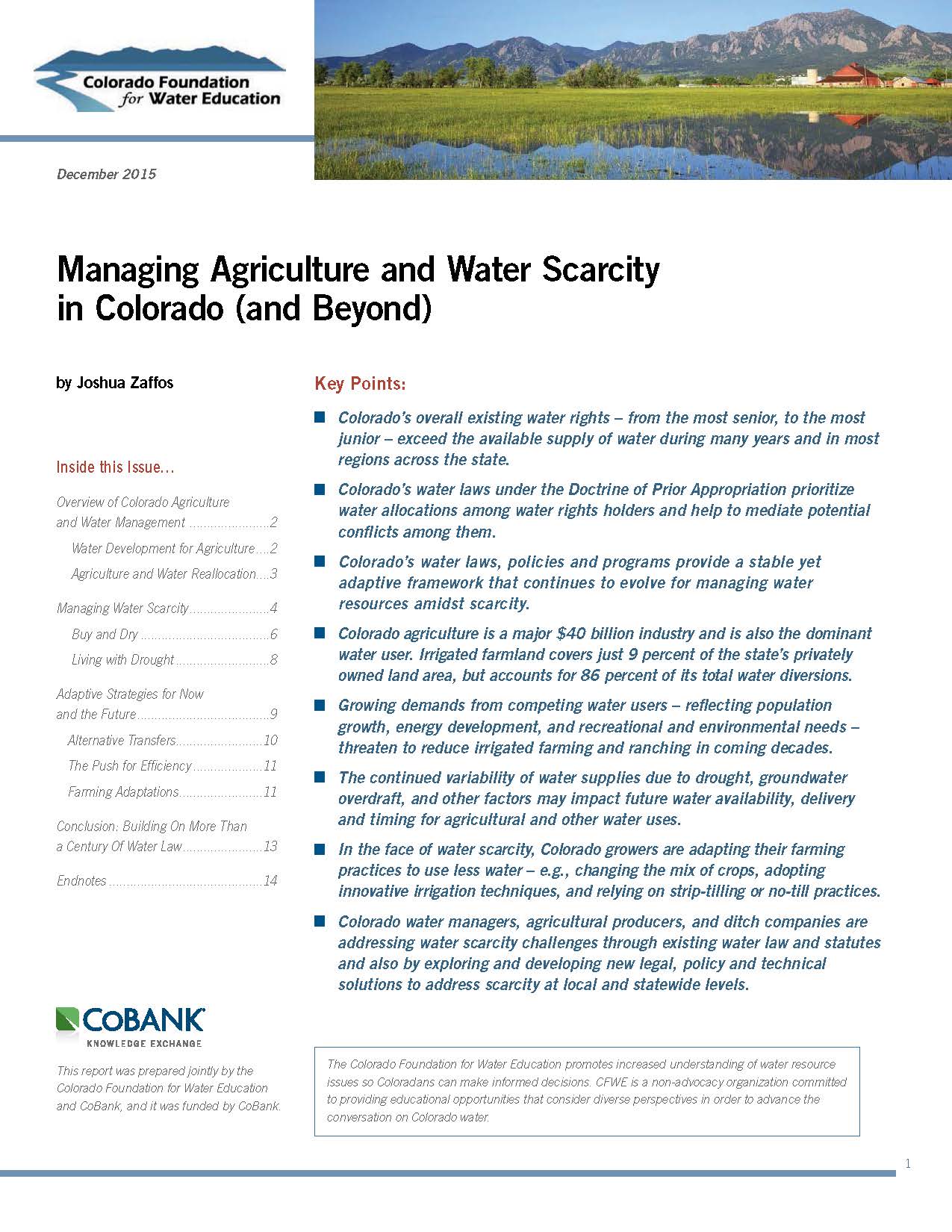
Colorado agriculture is a major $40 billion industry and is also the state's dominant water user. Irrigated farmland covers just 9 percent of the state's privately owned land area, but accounts for 86 percent of its total water diversions. Growing demands from competing water users threaten to reduce irrigated farming and ranching in coming decades. At the same time, the continued variability of water supplies due to drought, groundwater overdraft, and other factors may impact future water availability, delivery and timing for agricultural and other water uses.
 |
Growing demands from Colorado's many water users threaten to reduce irrigated farming and ranching in coming decades. In the face of water scarcity Colorado growers are adapting their farming practices to use less water. Read about those challenges and ways in which water manager, agricultural producers, and ditch companies are addressing water scarcity through the report, "Managing Agriculture and Water Scarcity in Colorado (and Beyond)," prepared by the Colorado Foundation for Water Education in partnership with CoBank. Read the report here.
|
Read more: Managing Agriculture and Water Scarcity in Colorado (and Beyond)
Headwaters Magazine
Learn more about Colorado water and water for agriculture by browsing the Headwaters magazine archive where you'll find recent issues on agriculture, Colorado's Eastern Plains, Colorado's Water Plan and many more.

